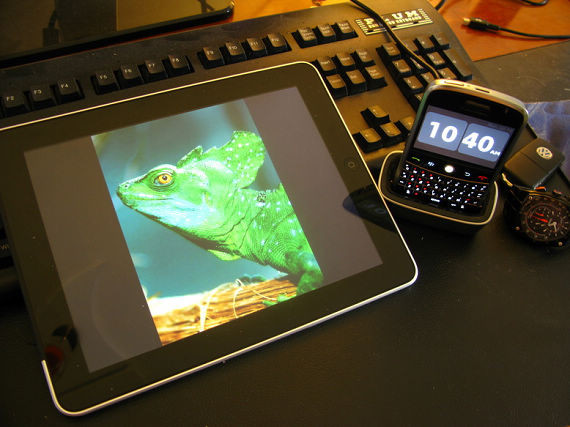评论:诺基亚与微软联手进军手机市场
luyued 发布于 2011-05-31 21:33 浏览 N 次2011年02月11日
今日(北京时间2011年2月11日星期五),全球第一大手机制造商诺基亚与软件巨头微软今天共同宣布,两家公司将建立深度战略合作伙伴关系,其中包括诺基亚智能手机将采用微软Windows Phone手机操作系统。
从微软的官网上我们可以看到一篇题为Nokia and Microsoft Announce Plans for a Broad Strategic Partnership to Build a New Global Mobile Ecosystem的新闻:
LONDON Feb. 11, 2011 Nokia and Microsoft today announced plans to form a broad strategic partnership that would use their complementary strengths and expertise to create a new global mobile ecosystem.
Nokia and Microsoft intend to jointly create market-leading mobile products and services designed to offer consumers, operators and developers unrivalled choice and opportunity. As each company would focus on its core competencies, the partnership would create the opportunity for rapid time to market execution. Additionally, Nokia and Microsoft plan to work together to integrate key assets and create completely new service offerings, while extending established products and services to new markets.
Under the proposed partnership:
l Nokia would adopt Windows Phone as its principal smartphone strategy, innovating on top of the platform in areas such as imaging, where Nokia is a market leader.
l Nokia would help drive the future of Windows Phone. Nokia would contribute its expertise on hardware design, language support, and help bring Windows Phone to a larger range of price points, market segments and geographies.
l Nokia and Microsoft would closely collaborate on joint marketing initiatives and a shared development roadmap to align on the future evolution of mobile products.
l Bing would power Nokia’s search services across Nokia devices and services, giving customers access to Bing’s next generation search capabilities. Microsoft adCenter would provide search advertising services on Nokia’s line of devices and services.
l Nokia Maps would be a core part of Microsoft’s mapping services. For example, Maps would be integrated with Microsoft’s Bing search engine and adCenter advertising platform to form a unique local search and advertising experience
l Nokia’s extensive operator billing agreements would make it easier for consumers to purchase Nokia Windows Phone services in countries where credit-card use is low.
l Microsoft development tools would be used to create applications to run on Nokia Windows Phones, allowing developers to easily leverage the ecosystem’s global reach.
Nokia’s content and application store would be integrated with Microsoft Marketplace for a more compelling consumer experience.
“Today, developers, operators and consumers want compelling mobile products, which include not only the device, but the software, services, applications and customer support that make a great experience,” Stephen Elop, Nokia President and CEO, said at a joint news conference in London. “Nokia and Microsoft will combine our strengths to deliver an ecosystem with unrivalled global reach and scale. It’s now a three-horse race.”
“I am excited about this partnership with Nokia,” said Steven A. Ballmer, Microsoft CEO. “Ecosystems thrive when fueled by speed, innovation and scale.The partnership announced today provides incredible scale, vast expertise in hardware and software innovation and a proven ability to execute.”
同样,在诺基亚的官方网站上可以看到这样的一篇报道:
Nokia and Microsoft announce plans for a broad strategic partnership to build a new global ecosystem
Nokia Corporation
Stock exchange release
February 11, 2011 at 9.30 (CET +1)
London, Feb. 11, 2011 - Nokia and Microsoft today announced plans to form a broad strategic partnership that would use their complementary strengths and expertise to create a new global mobile ecosystem.
Nokia and Microsoft intend to jointly create market-leading mobile products and services designed to offer consumers, operators and developers unrivalled choice and opportunity. As each company would focus on its core competencies, the partnership would create the opportunity for rapid time to market execution. Additionally, Nokia and Microsoft plan to work together to integrate key assets and create completely new service offerings, while extending established products and services to new markets.
Under the proposed partnership:
- Nokia would adopt Windows Phone as its principal smartphone strategy, innovating on top of the platform in areas such as imaging, where Nokia is a market leader.
- Nokia would help drive the future of Windows Phone. Nokia would contribute its expertise on hardware design, language support, and help bring Windows Phone to a larger range of price points, market segments and geographies.
- Nokia and Microsoft would closely collaborate on joint marketing initiatives and a shared development roadmap to align on the future evolution of mobile products.
- Bing would power Nokia"s search services across Nokia devices and services, giving customers access to Bing"s next generation search capabilities. Microsoft adCenter would provide search advertising services on Nokia"s line of devices and services.
- Nokia Maps would be a core part of Microsoft"s mapping services. For example, Maps would be integrated with Microsoft"s Bing search engine and adCenter advertising platform to form a unique local search and advertising experience
- Nokia"s extensive operator billing agreements would make it easier for consumers to purchase Nokia Windows Phone services in countries where credit-card use is low.
- Microsoft development tools would be used to create applications to run on Nokia Windows Phones, allowing developers to easily leverage the ecosystem"s global reach.
- Nokia"s content and application store would be integrated with Microsoft Marketplace for a more compelling consumer experience.
"Today, developers, operators and consumers want compelling mobile products, which include not only the device, but the software, services, applications and customer support that make a great experience," Stephen Elop, Nokia President and CEO, said at a joint news conference in London. "Nokia and Microsoft will combine our strengths to deliver an ecosystem with unrivalled global reach and scale. It"s now a three-horse race."
"I am excited about this partnership with Nokia," said Steven A. Ballmer, Microsoft CEO. "Ecosystems thrive when fueled by speed, innovation and scale. The partnership announced today provides incredible scale, vast expertise in hardware and software innovation and a proven ability to execute."
从这里,可以看出,这两家在业界知名度相当高的两家知名公司都相当的重视这一次的合作,相互说尽了好话。
可是,不难看出,两家公司都各怀鬼胎,都希望从对方的公司里得到自己所需要的那部分技术:微软需要诺基亚的手机制造技术,并利用诺基亚的知名度为其Windows Phone的操作系统做宣传。而诺基亚则是迫于在手机制造业中的龙头地位难保的压力,寻找大公司进行合作。但由于现在手机市场的竞争压力日益增大,不得不节省时间来加速更新或替换现有的塞班(Symbian)系统,同时,在现在的经济危机期间,公司缺少相应的科研基金(今天的合作公告发布后,诺基亚欧洲股价下跌9.93%,达7.35欧元),难以维持现有优势不得不采取合作。
那么,这次合作,到底是Win-Win的双赢还是某公司的一厢情愿呢?
现在的手机市场,品牌众多,鱼龙混杂。其中国人熟知诺基亚(Nokia)、摩托罗拉(Motorola)为代表的欧美品牌,三星(Samsung)、夏普(Sharp)所代表的日韩品牌以及联想(Lenovo)、魅族(Meizu)所代表的国有品牌,另外在我国市场,还充斥着大量的山寨机和小作坊的无牌无证的手机。可以看出,手机市场中品牌众多,似乎所有人都可以从中获得一杯羹,但是对于购买者来说,似乎更倾向于购买大品牌、高质量的品牌手机。由此,对于如诺基亚、摩托罗拉、联想等大品牌的手机制造商来说,竞争日益激烈。尤其对于诺基亚这家老牌的全球最大的手机制造商来说,占据更大的市场份额更是一贯的追求。
诺基亚为什么要舍弃Symbian的操作系统?
在1998年6月,英国伦敦,多家手机厂商为了对抗微软及将能够运行开放操作系统的移动通讯终端产品引进大众消费领域,取得未来智能移动终端领域的市场先机,1998年6月,诺基亚(NOKIA)、摩托罗拉(MOTOROLA)、爱立信(ERICSSON)、三菱(MITSUBISHI)和Psion在英国伦敦共同投资成立Symbian公司。
对于现有的塞班系统S60V1、S60V2、S60V3、S60V5还有最新的塞班3等等是常见的智能系统,还有非智能系统S40等等。多年来Symbian系统一直占据智能系统的市场霸主地位,系统能力和易用性等各方面已经得到了市场和手机用户们的广泛认可。并且占据手机操作平台市场的80%以上。
Symbian作为一款已经相当成熟的操作系统,具有:提供无线通信服务,将计算技术与电话技术相结合、操作系统固化、相对固定的硬件组成、较低的研发成本、强大的开放性、低功耗,高处理性能、系统运行的安全、稳定性、多线程运行模式、多种UI,灵活,简单易操作等九大优势。但并不代表说为Symbian OS所独有,只是Symbian OS将其这些特点突出,并且充分的这些特点发挥了优势,让其更好的为用户服务。
虽然Symbian系统的优势明显,但是,它的缺陷不容忽视:
Symbian机型所采用的硬件配置较低,且各类机型采用的的处理器主频较低,虽然系统可以使其获得较高的处理效能,但是在多媒体等方面的表现依然不尽如人意。在多媒体方面,Symbian OS对主流的媒体格式的支持性较差。Symbian OS虽然采用多种平台,来适应不同人群和各类需要,但是这也给Symbian OS带来了一种限制性的发展障碍。各个平台之间第三方软件不兼容,且软件开发商多专注于某一个平台,大大减少了各个平台上可用的第三方软件,给用户带来了一定的不便。版本之间兼容性差也是Symbian OS需要改进的一个地方,每当新版本的Symbian OS发布并有产品面世时,系统的兼容性便成了其发展的一个大敌。相当多的一部分软件需要软件开发商跟进,开发新的版本才能得以解决。 细节注意不够,由于Symbian只提供给厂商一个内核及UI,很多细节功能需要厂商去添加,但是很多厂商将着眼点放在了产品的多功能及综合性能等方面,往往忽略了一些基本的功能。同时,Symbian系统和部分的JAVA系统并不兼容。一些机型甚至连工作日闹钟这类功能都需要第三方软件才能实现,这无疑给不熟悉Symbian的用户的带来了极大的不便。
Symbian作业系统与Windows Mobile、Palm OS、Linux互相竞争,目前Palm OS已逐渐失去市场占有率,而Windows Mobile和Linux则来势汹汹,一般专家认为Windows Mobile对於Symbian版图的蚕食已不可避免。Symbian也与使用于低阶手机的内嵌式作业系统互相竞争,而后者倾向由各家厂商自行开发。
对于现在的Symbian来说,竞争对手越来越多:
Google Android
Android的出现并强势发展是近期手机行业当中引人注目的大事,Google介入手机领域的方式出乎所有人的意料,并非是之前人们所猜测的智能手机,而是联合30多家技术和无线应用领域当中的领军厂商所组成的开放式移动设备平台。
Windows Mobile
Windows Mobile(WM)系统源自Windows桌面系统,有着桌面应用的血脉,因此无论是界面设计还是功能应用都几乎和PC机如出一辙,在早期推广的时候,这也是大量用户投入到WM旗下的原因。
Linux
虽然在理论上Linux系统有着最为开源的特性,给开发者发挥的空间最大,但从近几年的发展来看,Linux系统似乎仍然远离着多数的普通消费者。
Palm OS
Palm OS作为一款嵌入式操作系统,用于PDA等专业设备上确实是它的强项。但是,在Palm发展11年之后,已经日益进入寒冬期,或许捍卫中高端专业领域才是它的正道。 iPhone OS或 OS XiPhone是由苹果公司为iPhone开发的操作系统。它主要是给iPhone和iPodtouch使用。就像其基于的Mac OSX操作系统一样,它也是以Darwin为基础的。如今已成为很多网友的支持,市场占有率一路飙升。
从以上的资料来看,诺基亚舍弃Symbian系统的确是“一个艰难的决定”,而且非常恋恋不舍,从今天的公告上:“诺基亚将继续销售Symbian系统手机1.5亿台”,这一条就不难看出。
那么微软的手机操作系统Windows Phone相对于Symbian又有哪些优势呢?
Windows Phone具有桌面定制、图标拖拽、滑动控制等一系列前卫的操作体验。其主屏幕通过提供类似仪表盘的体验来显示新的电子邮件、短信、未接来电、日历约会等,让人们对重要信息保持时刻更新。它还包括一个增强的触摸屏界面,更方便手指操作;以及一个最新版本的IE Mobile浏览器――该浏览器在一项由微软赞助的第三方调查研究中,和参与调研的其它浏览器和手机相比,可以执行指定任务的比例超过高达48%。很容易看出微软在用户操作体验上所做出的努力,而史蒂夫-鲍尔默也表示:“全新的Windows手机把网络、个人电脑和手机的优势集于一身,让人们可以随时随地享受到想要的体验。Windows phone,力图打破人们与信息和应用之间的隔阂,提供适用于人们包括工作和娱乐在内完整生活的方方面面,最优秀的端到端体验。
Windows phone具有以下的特色:
l 增强的Windows Live体验,包括最新源订阅,以及横跨各大社交网站的Windows Live照片分享等等。
l 更好的电子邮件体验,在手机上通过Outlook Mobile直接管理多个帐号,并使用Exchange Server进行同步。
l Office Mobile办公套装,包括Word、Excel、PowerPoint等组件。
l 在手机上使用Windows Live Media Manager同步文件,使用Windows Media Player播放媒体文件。
l 重新设计的Internet Explorer手机浏览器,支持Android Flash Lite。
应用程序商店服务Windows Marketplace for Mobile和在线备份服务Microsoft My Phone也已同时开启,前者提供多种个性化定制服务。 从这里,我们可以知道,微软利用其在计算机操作系统中的霸主地位,推出与Windows计算机操作系统相似的手机操作平台,让广大的手机用户,尤其是商务用户获得与计算机一样的操作感以及更好的文件、系统的兼容性。
从这里来看,似乎是诺基亚见到了大便宜,但是,作为全球计算机的龙头老大――微软(Microsoft)公司什么时候吃过亏呢?
Google公司作为网络IT公司,却推出了Android操作平台,在占据了全球搜索绝对优势后,又进军手机市场,这不禁为微软公司上了一课。
同时,Google公司和微软公司都是HTC的合作伙伴,但近段时间来G3、HERO等系列的HTC手机,几乎完全抢夺了微软公司WM操作平台的手机市场。所以,当这次的诺基亚需要合作对象的时候,微软公司更是再次看到了进军手机市场曙光。
根据以往的经验来看,微软公司的这次合作,无疑是为了找一个合作商来测试其WM的操作性能并评估WM的市场认可度,为其日后进军手机市场提供重要的软件支持。所以,可以看出这是微软公司开始手机研发的初步战略。
所以,这次的合作,初步看来,对于这两个大公司来说应该算得上是个说是个双赢的决定。可是,未来的走向怎样,还需要继续观望。
通过诺基亚与微软的合作宣言中,可以得知诺基亚与微软的长期战略联盟将打造一个全球性生态系统,带来前所未有的机遇。这个生态系统为运营商、开发者和消费者提供了非常好的选择。融合两家公司之间高度互补的资产和专长将让这个生态系统比其它任何业内系统都更为强大。欢迎来到第三个生态系统。微软和诺基亚有一些全球识别度最高的品牌,可以协助生态圈和产品的推广。包括必应、Xbox、Office、Windows Phone 和诺基亚在内的这些品牌现在将出现在同一个产品上。
可是诺基亚不会是一家单纯的 Windows Phone OEM 厂商。诺基亚计划帮助推动、定义整个平台的未来。这包括硬件优化、语言支持、软件定制以及帮助 Windows Phone 覆盖更广的价格区间、地区和市场份额。同时,诺基亚与微软的合作中,微软带来了自己的 Windows Phone 软件和 Bing、Office、Xbox Live 等等移动消费者渴求的品牌。
诺基亚运作着一个成熟的全球供应链网络,有实力将产品推向全世界的每一个角落,从而让未来的诺基亚Windows Phone 产品成功推向全球成为可能。规模对于成功的生态圈来说至关重要。诺基亚与微软联手将带来无与伦比的全球覆盖能力、品牌识别度和产品线。可以说消费者、开发者与运营商现在有了前所未有的选择,这是一个激动人心的时代。
究竟什么是第三生态系统呢?从这个图,我们可以有一个简单的了解:
这个生态系统将会给未来的我们带来什么样的改变,真的很值得我们拭目以待。
最后,我们来听听专家是怎么来评论的:
北欧市场研究公司Redeye分析师格雷格
- 06-10· 贵于坚持——智盟七年写
- 06-06· 恨透爱情恨透你(何华岳
- 06-06· “华岳”诚信3·15促销活动
- 06-05· 2011-04-16花海中的康博村
- 06-05· 康博羽绒服2011女款
- 06-05· 宝鸡市三诚锅炉有限责任
- 06-05· 康博谈睡眠
- 06-05· 气排球运动创造康博人新
- 06-05· 富迪与世界康博会签订框
- 06-05· 德州之窗网专访德州富豪
- 06-04· 华岳散人著作摘录:浅谈习
- 06-04· 望华岳
- 06-04· 华岳在外婆家
- 06-04· [转载]《江湖棋秘》第83局
- 06-04· 阳春三月朝华山--王道岭勇
- 06-04· 2010-2013年中国无极灯市场
- 06-04· 我希望你们都好好的
- 06-04· 心理月刊——李宇春“我
- 06-03· SAP安装问题解决
- 06-03· sap bw入门










